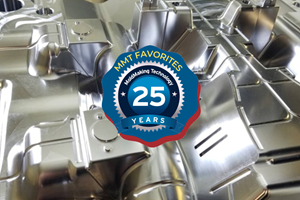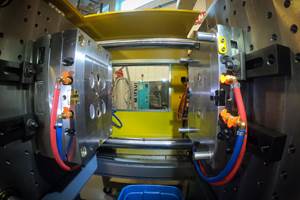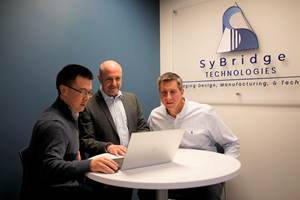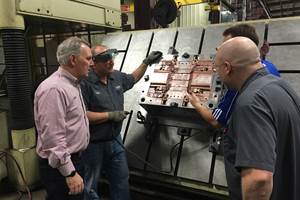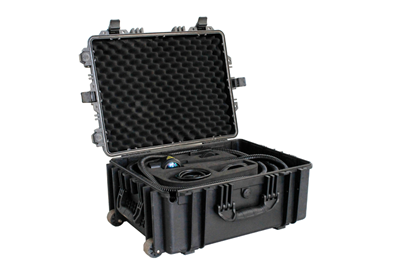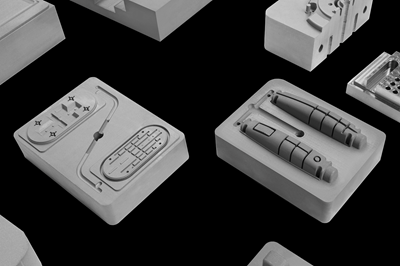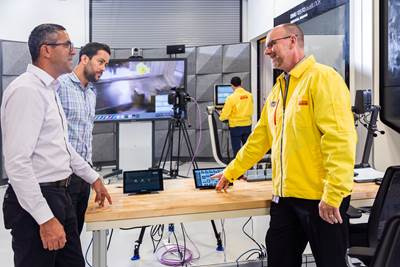Laying the Foundations for Facility Expansion
Moldmakers should start planning now for expansion to take advantage of potential new business this year.
This year could be a great one for moldmakers, but shops without the space to take advantage of potential new business could miss out if they don’t start making expansion plans now.
That is, if the past experience of one construction contractor is any indication. Kevin Romanko of Romanko Sales & Service (Sycamore, Ohio), an American Buildings Co. dealer, says most of the company’s clientele during his 30-plus years in the business has consisted of Midwestern tool and die manufacturers. He reports that a wave of facility expansions swept the industry after the economic downturn, when bankrupt shops left unfilled contracts that larger, more established companies in Romanko’s territory were quick to pick up. However, he says those without the space to install new equipment needed for this work were often unprepared for the lengthy process required to add to an existing facility, let alone build a new one.
Fortunately, the drivers of any upcoming expansions are likely to be more positive. Among other encouraging economic indicators, the capital spending report from MoldMaking Technology publisher Gardner Business Media shows industrial mold shops adding a great deal of new equipment this year. (Visit short.mmt.com/capspend for more information.) That equipment needs a home, and Romanko says crowded shops can benefit from some basic prep work well before they’re ready to start knocking down walls.
The first step is simply identifying what might be possible and mapping out “what-if” scenarios. The best place to start is not with a builder like Romanko, but with a local civil engineer or architect, he says. Crafting site plans can help identify needs that the expanding company might not have initially anticipated. For example, perhaps an addition will require a larger parking lot or new loading dock for truck access. Local experts can also offer insight into restrictions like building and fire codes. For instance a facility larger than a certain size might require a firewall that could stymie plans for, say, cranes and other large material-handling systems.
Their input is even more important for addressing local zoning ordinances and other regulations, which are subject to frequent change and are perhaps the most common obstacle to timely expansion, Romanko says. While the process varies by community, shops must typically submit proposals to local planning commissions for approval. Having a professional help anticipate and answer the commission’s questions beforehand can save a lot of time. “In a lot of areas we cover, the approval process alone is taking three to six months,” he notes. “You have to have all your information in by a certain time to be on the agenda for the next meeting—you can’t just walk in. Then, once all your drawings and plans go through initial reviews and you’re on the agenda, you go before the board, which is made up of community members who haven’t the foggiest idea about how to build a mold.”
Romanko adds that it’s also worth contacting area economic development councils about tax credits or other incentives that might be available to manufacturing businesses. Finally, when the time comes to consult a builder, he recommends shying away from any that ask for money up-front, thoroughly checking out references, and consulting consumer protection agencies.
“Companies that want to expand might put that in the budget for the next year, but at the same time, they should be doing a little civil engineering to see what their limits are,” Romanko concludes. “If you get into a situation where you can expand, you can proceed a lot quicker if you have a lot of the legwork already done.”
Related Content
Leading Mold Manufacturers Share Best Practices for Improving Efficiency
Precise Tooling Solutions, X-Cell Tool and Mold, M&M Tool and Mold, Ameritech Die & Mold, and Cavalier Tool & Manufacturing, sit down for a fast-paced Q&A focused on strategies for improving efficiencies across their operations.
Read MorePredictive Manufacturing Moves Mold Builder into Advanced Medical Component Manufacturing
From a hot rod hobby, medical molds and shop performance to technology extremes, key relationships and a growth strategy, it’s obvious details matter at Eden Tool.
Read MoreTransforming Moldmaking into Digital Industrial Manufacturing
Moldmaking and digitalization is at the core of this global industrial manufacturing company’s consolidation and diversification plan.
Read MoreOEE Monitoring System Addresses Root Cause of Machine Downtime
Unique sensor and patent-pending algorithm of the Amper machine analytics system measures current draw to quickly and inexpensively inform manufacturers which machines are down and why.
Read MoreRead Next
Reasons to Use Fiber Lasers for Mold Cleaning
Fiber lasers offer a simplicity, speed, control and portability, minimizing mold cleaning risks.
Read MoreAre You a Moldmaker Considering 3D Printing? Consider the 3D Printing Workshop at NPE2024
Presentations will cover 3D printing for mold tooling, material innovation, product development, bridge production and full-scale, high-volume additive manufacturing.
Read MoreHow to Use Continuing Education to Remain Competitive in Moldmaking
Continued training helps moldmakers make tooling decisions and properly use the latest cutting tool to efficiently machine high-quality molds.
Read More

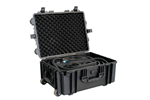


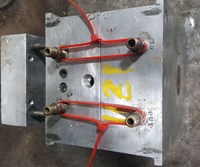
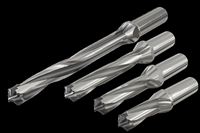


_300x250 1.png;maxWidth=300;quality=90)




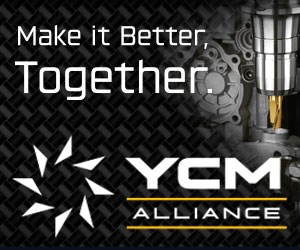
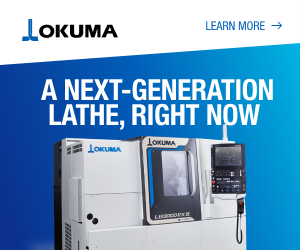


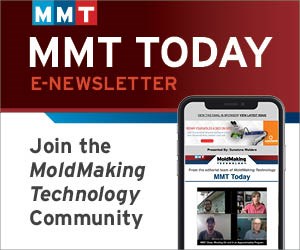
.jpg;maxWidth=300;quality=90)
